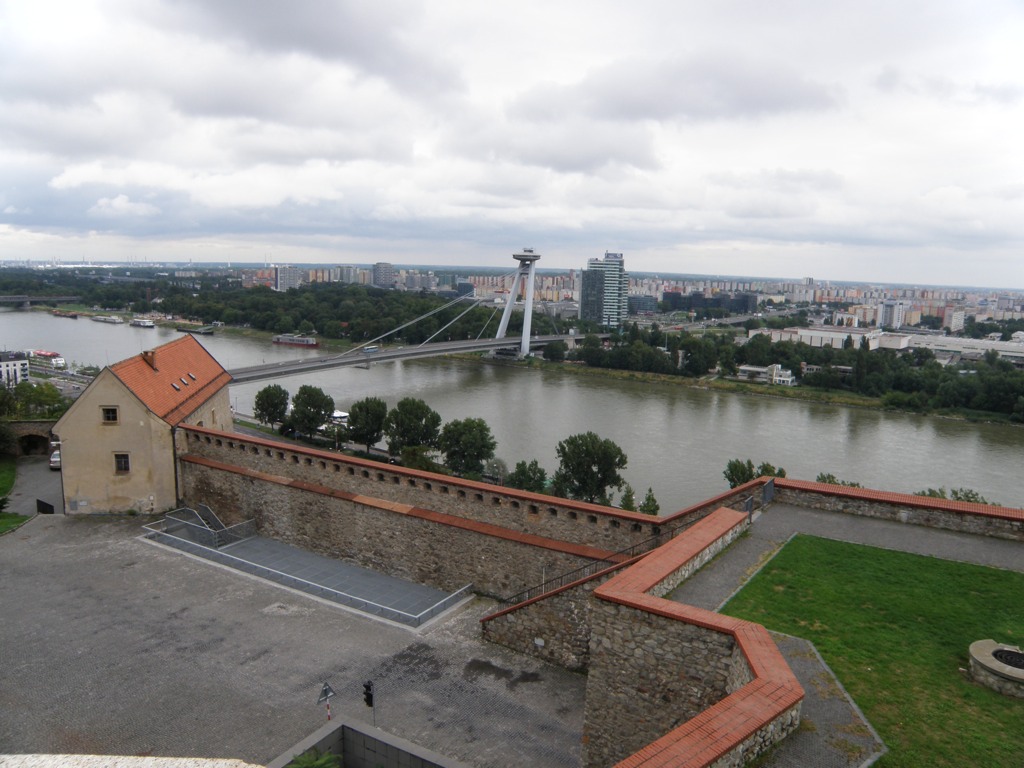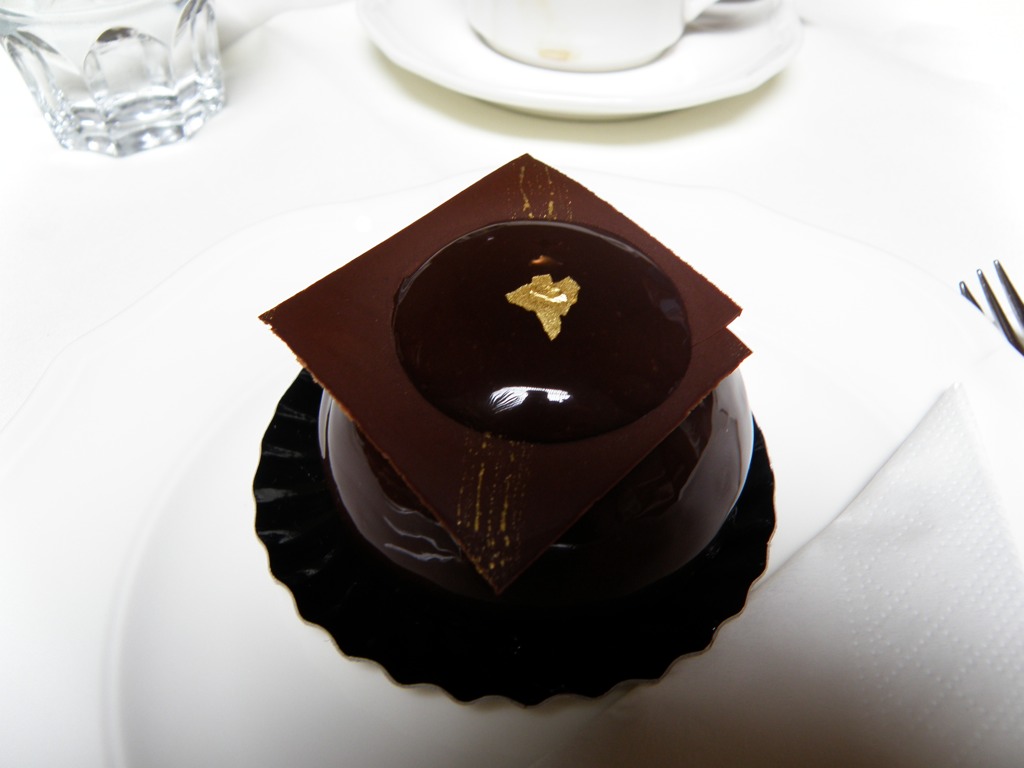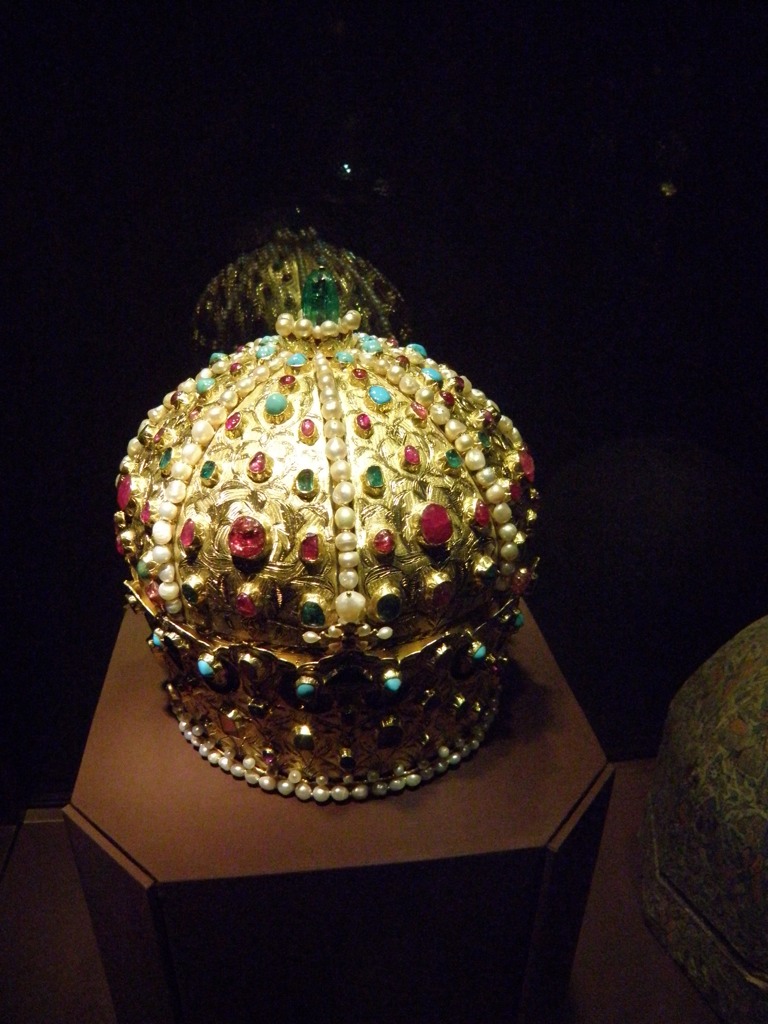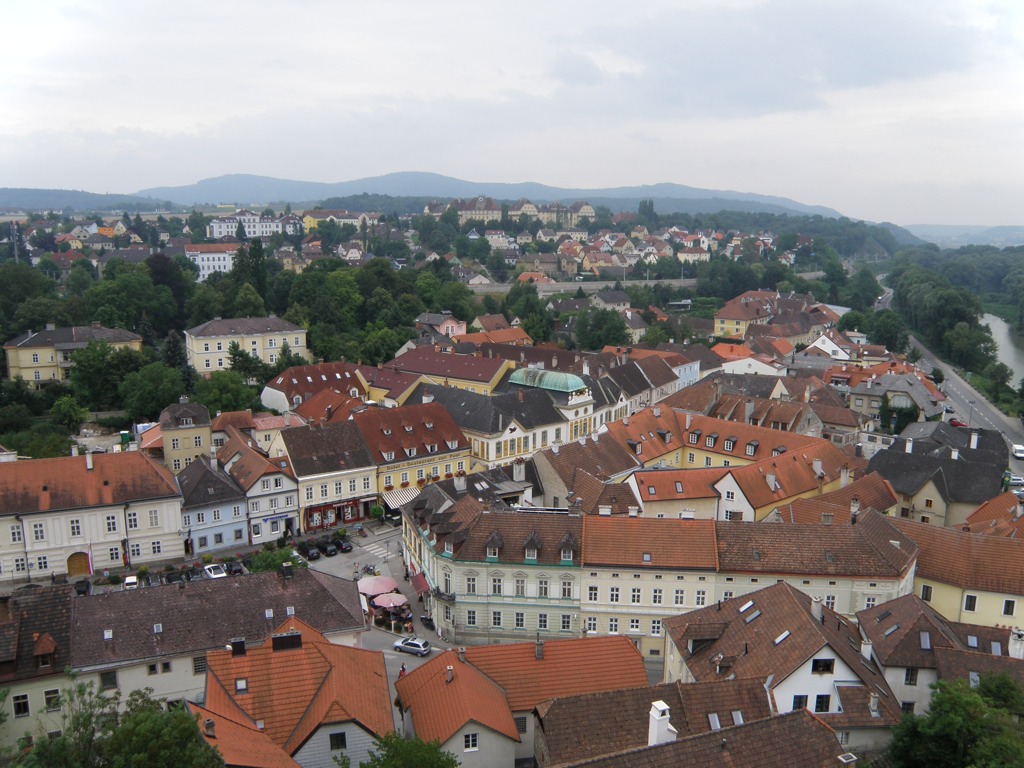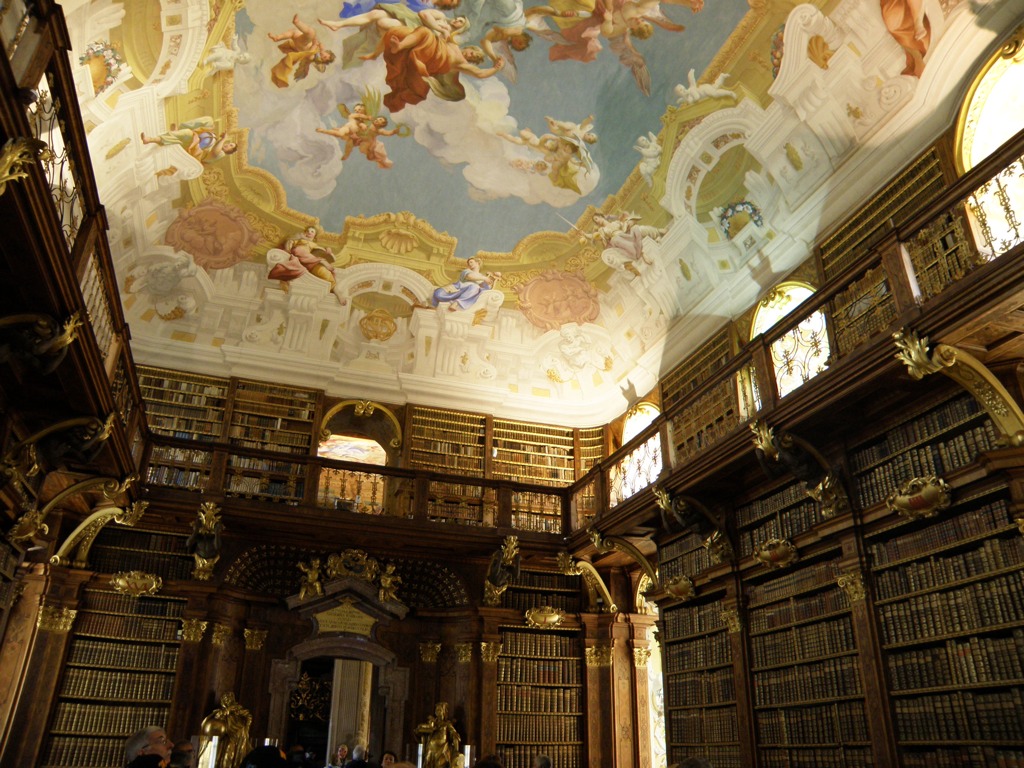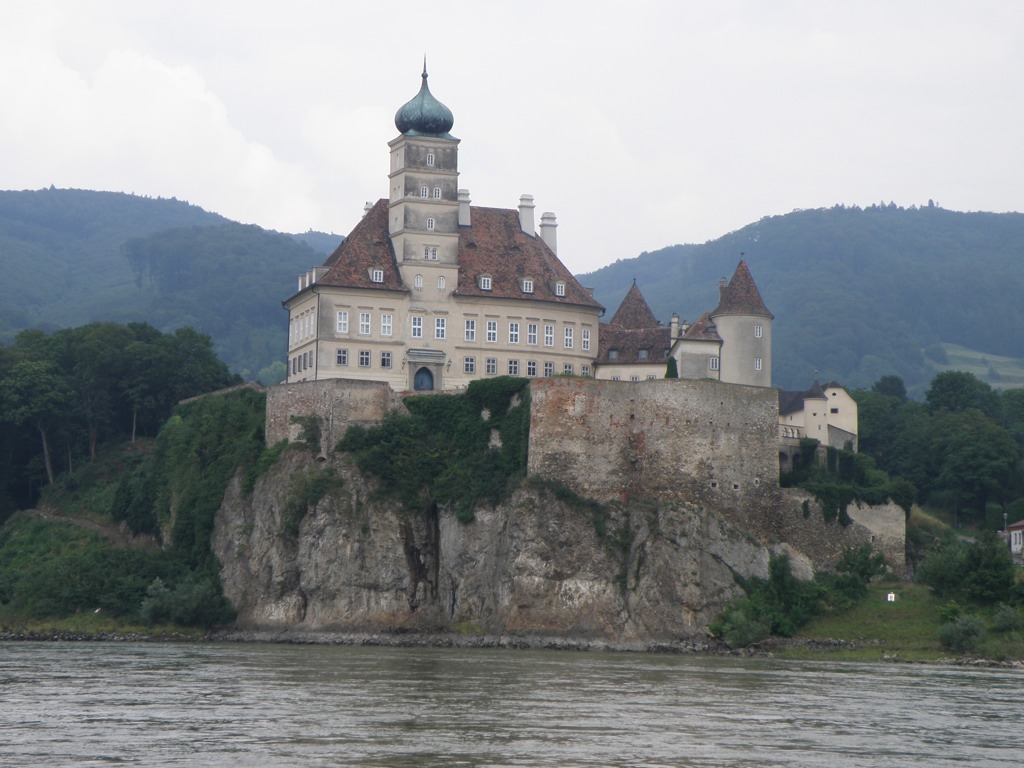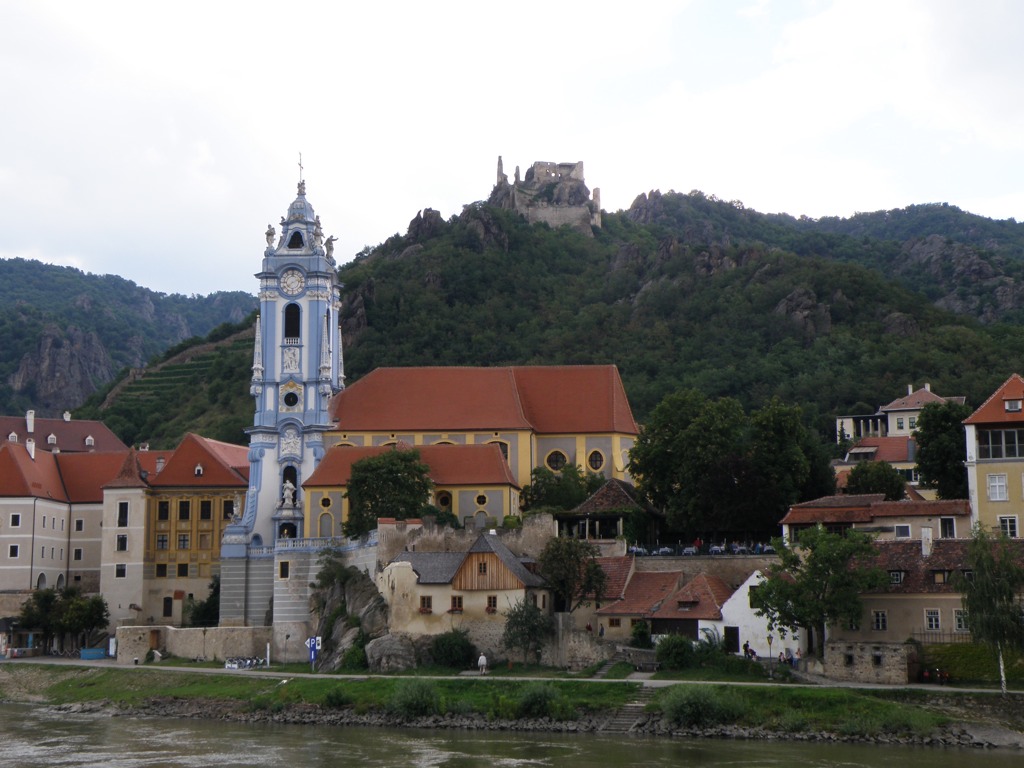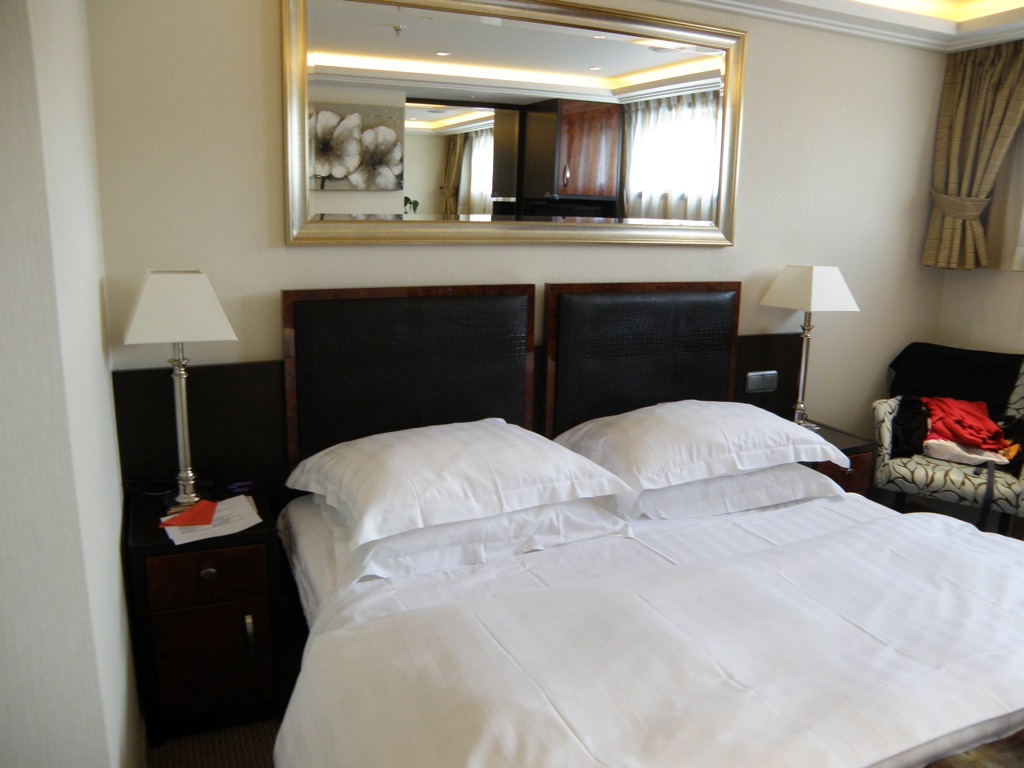I was thrilled to find my missing earring from last night, sitting on the reception counter under the lost property sign - I have no idea who found it, or where it was found, but phew.....
At 11 am we had a big briefing from Marion about disembarkation day in Budapest on Tuesday morning. She has kindly enquired about a taxi for four people, knowing that was my preference, so I'm very grateful to her. She said to avoid the taxis in Budapest and Prague wherever possible as they can rip you off big time. But she has a reliable contact she uses for the boat passengers.
We arrived earlier than expected in Bratislava (also known as 'Pressburg'), the capital of Slovakia, or the Slovak Republic. The weather had been gloomy and drizzly all morning. Slovakia became independent of Czechoslovakia in the early 1990s. In 1918 the Slovaks had joined the closely related Czechs to form Czechoslovakia. Following the chaos of WWII, Czechoslovakia became a Communist nation within Soviet-ruled Eastern Europe. Soviet influence collapsed in1989 and Czechoslovakia once more became free. The Slovaks and the Czechs agreed to separate peacefully on 1 January 1993.
After lunch we chose the Tour of Communist Bratislava by coach. The first half of the tour was on an old 1970s style orange bus, then we switched to a newer bus. We covered a lot of the city, including the new Slovak National Theatre, over the New Bridge with its UFO restaurant, the Square of Liberty, the so-called upside-down pyramid building, an Ice Hockey arena which apparently hosted some recent world ice hockey championships (couldn't get a photo, but it looked flash), various slab housing apartment buildings from the Communist times and more. We went up a hill to the Soviet War Memorial (Slavin) where there were great views. Then across to the Castle (that Empress Maria Theresa had built for her daughter, and which was rebuilt in more recent times after fires). The Castle was rebuilt in the Baroque style, although they did find a single Gothic Window which they left in place. The view from there was amazing too.
I have to say that this trip left me feeling depressed and so grateful that we live in NZ. The tour guide told us a lot about the way of life in Communist times, the housing systems, the corruption, the supposedly free elections, the difficulties buying many goods, the rules, treatment of the churches... it was all dreadful. We noticed the graffiti everywhere, everything was looking run down and tired, and I forgot to ask if they had graffiti in Communist times!
With relief we got back to the boat and I couldn't face a walk into town to look at the older section. So, it was back to the lounge to relax. The trip has been so busy, that it's good to have time to just sit.
At 6 pm we had the Farewell Captain's Gala Cocktail in the lounge, followed by the Farewell Captain's Gala Dinner in the Restaurant. We had to dress smartly. The dinner was wonderful. All the staff on the boat were introduced and thanked (including the ones who wash the dishes), it was a lovely thing to do and very interesting to see who did what, especially out in the kitchen. We were each given an APT serviette ring as a souvenir, and our wonderful waiter, Gabriel (from Romania), found some extras for us to make up sets of four.
Entertainment after dinner was by the group, Aphrodite, a group of young women from Bratislava, playing an eclectic range of modern songs on classical instruments - flute, piano, violin, cello, viola. All in all, a very pleasant evening.
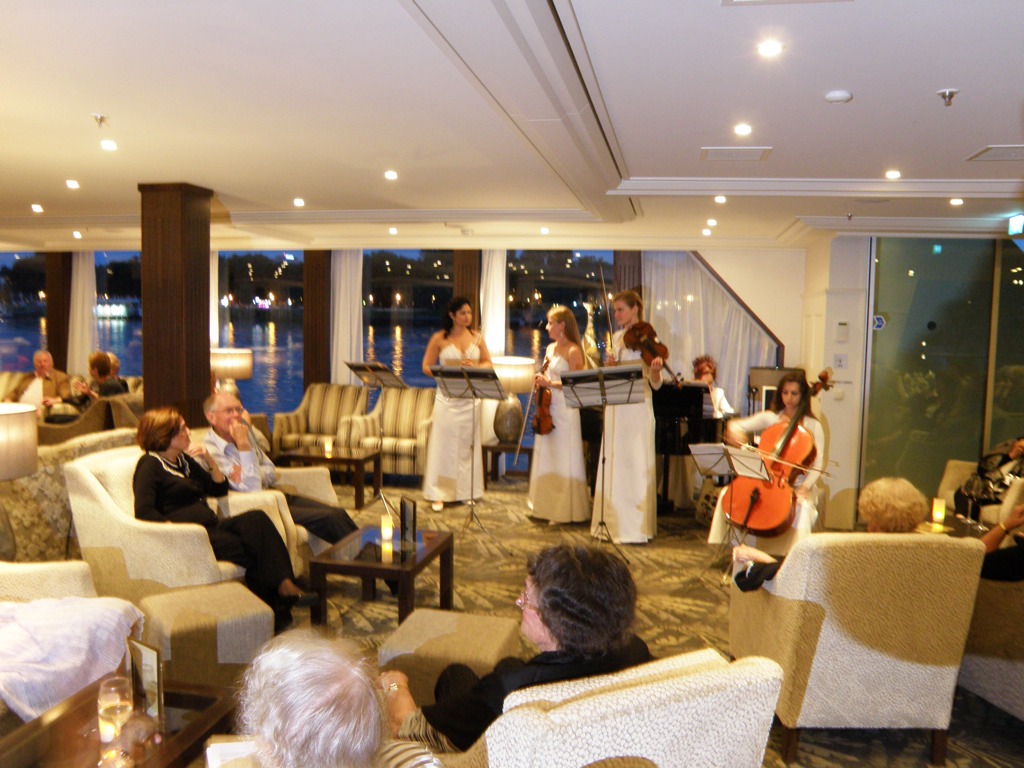
At 10:30 pm we set sail for Budapest, Hungary.



